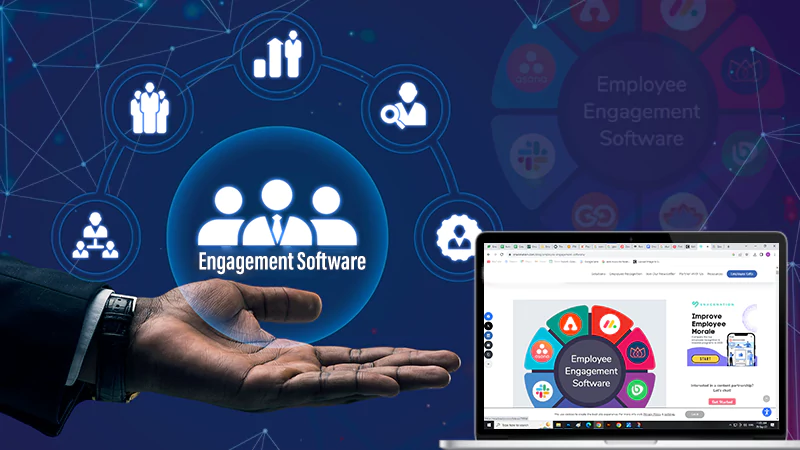How to Choose the Right Relationship Mapping Software

In a highly competitive market, understanding your business relationships and how they interconnect is more critical than ever. Fortunately, technology has made it possible to visualize these connections in an easily understandable format.
The key to this is relationship mapping software (RMS) —a potent tool for organizations striving to keep their work well-managed and profitable.
In this article, we dive into deciding on the right relationship mapping software for your company’s requirements. Keep reading to learn more.
Understanding Relationship Mapping Software and Its Importance
Relationship mapping software (RMS) is an advanced tool that allows companies to visualize their business network, including customers, prospects, partners, and suppliers, in a structured, interactive map.
This map helps understand the complexities and opportunities of company connections, which is vital in today’s interconnected enterprise ecosystem. It also helps strengthen the network with existing and new clients.
Moreover, the right RMS can provide necessary insights into the connection dynamics within your organization. This lets you make strategic and informed decisions, improving resource management and long-term venture networks.
The increasing demand for complex data analysis and the importance of maintaining robust company connections have amplified the necessity for advanced tools like relationship mapping software. Consequently, opting for the right one has become a strategic decision for organizations.
Numerous computer programming solutions exist in the marketplace, making the decision tough. However, understanding its significance in your business operations will simplify selection.
THINGS TO CONSIDER
The right relationship mapping software helps identify potential stakeholders, and their preferences, and win their credibility.
Key Factors to Consider When Selecting Relationship Mapping Software
The first step in purchasing the right RMS is identifying your organization’s hinge points. These points include business process management, client relations, lead generation, prospect tracking, and others. Each aspect requires unique capabilities from the software, and your choice should cater to these needs specifically.
Consider the interests of the client for a better deal and prospects of bigger ventures. It can include agreements of short or long-term deliverables. With strategic thinking and systemic goals produced by the software, the goals will become easily achievable.
Another vital factor to consider is the ease of using the computer program. If it is complex and requires continual guidance, it may not be the best choice. Your team should be able to quickly adapt to the tool, enabling them to maximize its utility.
The software’s scalability is also relevant—it should adapt and evolve with your company’s growth. Consider a computer program that provides flexible and scalable features, accommodating your future requirements without substantial additional costs.
Finally, its cost-effectiveness should be a factor relevant to consider. The cost should align with the software’s value to your enterprise, both in the short and long run.
Customer relationship management plays a significant role in improving business growth. The world’s biggest economy is the U.S. which leverages it fully to stay ahead of the competition as shown in the graph below.

Assessing Your Business Needs Before Choosing a Relationship Mapping Tool
Before investing in an RMS tool, assess your business needs. Not every solution on the market will perfectly align with your organizational requirements. Identifying these needs will streamline your search and increase the likelihood of picking a perfect match.
Consider the extent of your company connections, the diversity of your connections, and the complexity of your landscapes. With this information, you can establish what kind of tool you need, both in complexity and scalability.
Understanding the manpower that will be primarily using the software is also significant. If your sales team will be using the tool, ensure that it supports sales-centric features like lead tracking, new lead generation, and others.
The relevant stakeholders should be assured that their diverse interests are met. This means creating a balanced representation of the most relevant ideas from each organization. It will also negate the possibility of any sudden misinformation that couldn’t be negotiated.
In this regard, the pecking order of the group is preferred with subjective measures for improvement. Keeping all information updated is necessary for clearly defining company goals.
Lastly, consider any specific technological requirements your company may have. If you desire a cloud-based solution or need an API-based integration, your choice should cater to these needs.
Conclusion
Opting for the right relationship mapping software (RMS) is a strategic decision that can significantly impact your venture operations. It maintains credible business networks and also improves company value with the investors.
Training your team to adapt to changing business environments with updated software is vital in achieving goals as a team. The computer program should be fully equipped to accommodate present requirements that also help the company’s scalability in the future.
By thoroughly understanding your requirements, assessing its features, and following a step-by-step selection process, you can find a tool that adds value and efficiency to your business.
Share
















